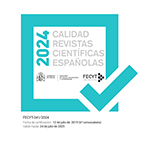Visioni di sterminio ne "La Storia"
Abstract
Partendo dalla condanna morale della Storia, elaborata sulle orme della filosofa francese Simone Weil e dalle suggestioni indirette esercitate dal nuovo orientamento metodologico degli studi storici (si chiamerà microstoria), nel suo romanzo più popolare (La Storia, 1974) Morante propone differenti visioni di sterminio: morti individuali dotate di profondo valore simbolico, stragi di grandi numeri di esseri viventi. Per il primo caso propongo l’esempio della coppia Useppe/Davide: Useppe viene annientato per aver assunto su di sé, in umiltà e innocenza, il Male della storia; Davide è stritolato dai processi violenti della storia che egli ha tentato d’interpretare ricorrendo alla cultura e alla ragione, fino a contrarre il male che avrebbe voluto combattere. La strage collettiva degli ebrei è rappresentata attraverso metafore animali: la tragedia che macchia la storia del Novecento (il massacro degli ebrei nei campi di concentramento nazisti) è saldata alla consuetudine quotidiana, praticata senza turbamento e senza percezione di colpa (l’uccisione degli animali per essere di cibo agli umani). Questo accomunamento culmina nelle due straordinarie immagini che, a distanza di tempo, Useppe incontra alla stazione Tiburtina: il vitello che aspetta d’essere condotto al macello, gli ebrei del ghetto romano avviati ai campi di sterminio.Downloads
##submission.format##
Licenza
La revista Cuadernos de Filología Italiana , para fomentar el intercambio global de conocimiento, permite el acceso sin restricciones a sus contenidos desde el momento de su publicación en la edición electrónica, por lo que es una revista de acceso abierto. Los originales publicados en esta revista son propiedad de la Universidad Complutense de Madrid y es obligatorio indicar su origen en cualquier reproducción total o parcial de la misma. Todos los contenidos se distribuyen con una licencia de uso y distribución.
Reconocimiento de Creative Commons 4.0 (CC BY 4.0).
Este hecho debe hacerse explícitamente en esta forma cuando sea necesario. Puede consultar la versión informativa y el texto de la licencia legal .
La revista Cuadernos de Filología Italiana no recibe honorarios por la presentación de trabajos o por la publicación de sus artículos.










